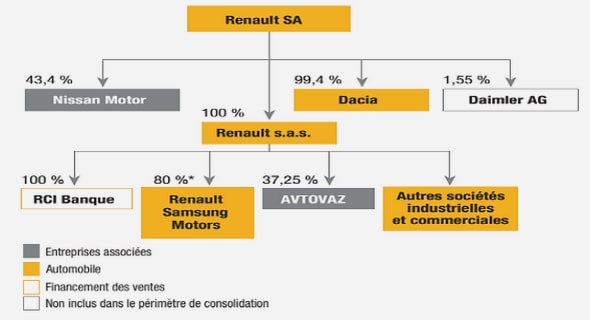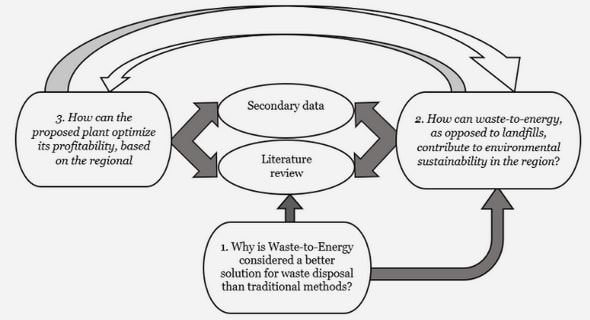Get Complete Project Material File(s) Now! »
CHAPTER TWO LITERATURE REVIEW AND THE THEORETICAL FRAMEWORK OF THE STUDY
Introduction
This literature review explores the dominant theme of this study which is facilitating access to records through the provision of public programming activities. As a way of introduction, the significance of a literature review in research is included in this chapter.Furthermore the theoretical framework that guided the study is presented within this chapter as well.In striving to contextualise this study a background on access to archival records and public programming is provided. The scope of this literature review is guided by the objectives for this study, which focus on the status quo of public programming strategies in the ESARBICA region, the link between legislation and policies and facilitating access,archivists skills and archival education with regard to public programming, collaboration as an enabling factor in facilitating access to the archives and the utilisation of Web 2.0
tools to promote access to the archives.The examined literature was not limited to available information emanating from the
ESARBICA region and the field of archives and records management. As a result different experiences and research findings were presented that later on proved that this study has
the potential to make a significant contribution to the topic of public programming in public archives.
The significance of a literature review
Blaxter, Hughes and Tight (1996:110) describe a literature review as “a critical summary of the range of existing materials dealing with knowledge and understanding in a given field…its purpose is to locate the research project, to form its context or background, and to provide insights into previous work”. Furthermore the Sage Dictionary of Social Research Methods (2006) points out the fact that there is a vast amount of information available in different formats; it is therefore the researcher’s responsibility to be selective and provide specific information for the research project. The purpose of conducting a literature review is to:
Clarify and conceptualise the research question, pointing out gaps in the existing literature;
Improve the methodology, which is done by observing how other investigators have studied the same topic; and
Widen the researcher’s knowledge in the chosen area.
(Sage Dictionary of Social Research Methods 2006:2) Leedy and Ormrod (2010:51) describe the literature review process as a way to “look again at what other researchers have done on your topic of choice”. They outline the following as benefits of conducting a literature review:
To ascertain whether other researchers have already addressed and answered the proposed research problem.
Offer new ideas, perspectives and approaches that may have not occurred to you.
Inform about other individuals who conduct work in this area.
To show how others have handled methodological and design issues in similar studies.
To reveal sources of data you may not have known existed.
Introduction to measurement tools that other researchers have developed and used effectively.
To reveal methods of dealing with difficulties similar to those faced in tackling similar research.
In short, the literature review provides the researcher with the opportunity to locate his or her work within the work of other researchers. Hofstee (2006) explains that this will not just be of significance to the researcher, but also fellow researchers as it will enable them to understand the context and direction of the particular study. To achieve this it is crucial to consult a variety of sources within a field of knowledge, which in this instance is public
programming and access to archival resources. The following range of sources was consulted to complete this literature review:
Printed Journals: for example ESARBICA Journal.
Online Gateways and Databases: for example EbscoHost, Emerald and others.
Books in the context of archives, public programming, marketing public services,social marketing and social research methods.
Government and other regulatory body publications: for example archival legislation, ICA and ESARBICA policies and documentation.
Reference texts: for example The Sage Dictionary of Social Research Methods and others.
The information included in this chapter of the thesis provides an overview of the concepts that affect public programming initiatives or practices in ESARBICA and other regions as described in available literature. This was done with the hope of contributing to a better understanding of public programming and this practise in the ESARBICA region.
Organisation of the literature review
Public programming is not a new concept (Blais and Enns 1991); however, such activities are carried out differently. This provides a sound reason for focusing on the experiences of ESARBICA. The objectives of this study outlined in Chapter One guided the structure of the literature review with the inclusion of a theoretical framework that the study is based on.The task of compiling a literature review for a research topic involves reading and synthesizing information from numerous sources (Leedy and Ormrod 2010). The challenge at hand therefore became how to structure the literature review in such a way that it does not come across as a disorderly collection of ideas on a research topic but
rather a streamlined narration of what is known and what is not known regarding the research topic. To avoid cluttering ideas Creswell (2009) advises researchers to make use of concept maps to develop a literature review map. Creswell (2009:33) suggests that this will help to “organise the literature and help others to understand the contribution of the current study”. Adam (2012) argues that concept maps can:
facilitate the organisation and extraction of key information from very many sources with a view to assimilate the material in a structured manner. The objectives are to determine the main concepts underpinning the study, to establish how they are interlinked and to enhance this understanding with further detail on those areas of particular interest. Likewise Alias and Suradi (2008:2) explain that students make use of concept maps to develop research reviews because the maps help them to “extract and summarise the important points from articles, to synthesize and organise information”. Concept maps are graphic tools that help people to comprehend concepts easily (Daly and Torre 2010). Daly and Torre (2010:441) therefore suggest that when developing concept maps, the identified concepts should be organised by starting from the ‘most general’ to the ‘more specific’, showing how each concept is linked from the beginning till a conclusion is reached.
SUMMARY
KEYWORDS
ACKNOWLEDGEMENTS
DEDICATION
DECLARATION
LIST OF FIGURES
LIST OF TABLES
LIST OF ABBREVIATIONS AND ACRONYMS
LIST OF APPENDICES
CHAPTER ONE INTRODUCTION TO THE STUDY
1.0 Introduction
1.1 The rise of public programming
1.1.1 The link between access to the archives and public programming
1.2 Background to the study
1.2.1 ESARBICA
1.2.2 Public programming in ESARBICA
1.3 Research problem
1.3.1 Research purpose
1.3.2 Research objectives
1.3.3 Research questions
1.4 Justification of the study
1.5 Originality of the study
1.6 Significance of the study
1.6.1 Definition of terms
1.7. Research methodology and design
1.7.1 Population
1.7.2 Data collection methods
1.7.3 Research instruments
1.7.4 Data Analysis
1.8 Ethical considerations
1.9 Scope and limitations of the study
1.10 Organisation of the thesis.
1.11 Summary of the chapter
CHAPTER TWO LITERATURE REVIEW AND THE THEORETICAL FRAMEWORK OF THE STUDY
2.0 Introduction
2.1 The significance of a literature review
2.1.1 Organisation of the literature review
2.2 Theoretical framework of the study
2.2.1 The records life cycle model and the records continuum model
2.2.2 The link between the theoretical framework and the research problem of the study
2.3 Public programming in archives
2.3.1 Public programming as a means of promoting access to the archives
2.3.2 Marketing archives versus promoting access to the archives
2.3.3 Advocacy
2.3.4 A worldwide perspective on public programming
2.3.5 The ICA’s perspective on public programming
2.3.6 Public programming in ESARBICA
2.4 Factors that influence the development and implementation of public programming strategies in public archives
2.5 The role of legislation in public programming
2.5.1 Archival legislation in ESARBICA in relation to accessing public archives
2.6 Public programming policies
2.7 Public programming activities in the ESARBICA region
2.8 User studies and customer focus as an essential part of public programming initiatives
2.8.2 Evaluation of archival services
2.9 The use of technology in promoting access to public archives
2.9.1 The World Wide Web (WWW)
2.9.2 Web 2.0 and public programming
2.9.3 The use of Web 2.0 tools for public programming initiatives within ESARBICA .
2.10 Collaboration as an enabling factor in organising public programming activities.
2.10.1 Collaboration in public programming ventures in the ESARBICA region
2.11 The relevance of archivists’ knowledge and skills in planning and executing public programming activities
2.11.1 Different roles played by archivists in the changing information landscape
2.11.2 Public programming as part of archival education and training for archivists
2.11.3 Public programming as part of archival education and training for archivists in the ESARBICA region
2.12 Related studies on public programming
2.12.1 Worldwide Studies
2.12.2 Local studies
2.12.2.1 West African studies
2.12.2.2 East and southern African studies
2.13 Synthesis of the literature review
2.14 Summary of the chapter
CHAPTER THREE RESEARCH METHODOLOGY
3.0 Introduction
3.1 Research paradigms
3.1.1 Key social science research paradigms
3.1.2 Selected research paradigm for the study
3.2 Research methodology
3.2.1 Research methodology selected for the study
3.2.2 Research design
3.3 Population of the study
3.4. Data collection methods
3.4.1 Survey research
3.4.2 Methodological triangulation
3.4.3 Research instruments
3.4.3.1 The questionnaire
3.4.3.1.1 Advantages and disadvantages of questionnaires
3.4.3.1.2 Questionnaire construction
3.4.3.1.3 Open-ended questions
3.4.3.1.4 Close-ended questions
3.4.3.1.5 Questionnaire layout
3.4.3.2 Interview guides
3.4.3.3 Content analysis
3.4.4 Data collection procedures
3.5 Validity and reliability
3.6 Data analysis
3.6.1 Quantitative data analysis
3.6.2 Qualitative data analysis
3.7 Ethical considerations
3.8 Evaluation of the research methodology
3.9 Summary of the chapter
CHAPTER FOUR PRESENTATION AND ANALYSIS OF DATA
4.0 Introduction
4.1 Data presentation
4.2 Response rate and background of participants
4.3 Institutional and participants’ profiles
4.3.1 Institutional profiles
4.3.1.1 National archives mission statements
4.3.1.2 Staff working in the national archives
4.3.1.3 Number of staff in the different archival capacities
4.3.2 Archivists profiles
4.3.3 ESARBICA Board Members
4.4 Public programming in the ESARBICA region
4.4.1 Existence and frequency of public programming projects in the ESARBICA region
4.4.1.1 Archivists’ response on the existence of public programming programmes in the ESARBICA region
4.4.1.2 Public programming initiatives as reported in the country reports
4.4.2 Budgetary support for public programming projects
4.4.3 Raising awareness about the national archives
4.4.3.1 Linking public archives with the people’s needs
4.4.4 Factors that influence public awareness of National Archives
4.4.5 Obstacles faced when conducting public programming projects
4.5 Role of legislation and policy in rendering public programming strategies in the ESARBICA region
4.5.1 Archival legislation in ESARBICA in relation to promoting access to public archives
4.5.2 National archival legislation and policies that govern public programming in the ESARBICA region
4.5.2.2 Support from governing authorities
4.6 Archivists’ knowledge and skills about public programming in the ESARBICA region
4.6.1 Archivists’ knowledge and skills about public programming
4.6.1.1 Knowledge or skill gaps with regard to public programming
4.6.1.2 Education on public programming in the ESARBICA region
4.6.1.3 Public programming training in the ESARBICA region
4.7 The role of user studies and customer focus in public programming initiatives
4.7.1 User studies and customer satisfaction in the ESARBICA region
4.7.1.1 User needs
4.7.1.2 Customer satisfaction
4.7.1.3 Identification of new users
4.7.1.4 Duration of open hours
4.7.1.6 Attracting potential users
4.8 Collaboration as a means to further public programming in the ESARBICA region
4.9 The use of social media to raise awareness about the archives
4.10 Summary of the chapter
CHAPTER FIVE INTERPRETATION AND DISCUSSION OF THE FINDINGS
5.0 Introduction
5.1 The National Archives of ESARBICA
5.1.1 Institutional and archivist profiles
5.2 Public programming in the ESARBICA region
5.2.1 Frequency of public programming activities
5.2.2 Budgets for public programming plans
5.2.3 Raising an awareness of the national archives
5.2.3.1 Use of premises for public services
5.2.3.2 Promotional material
5.2.3.3 Linking public archives with the people’s needs
5.2.4 Factors that influenced public awareness of national archives
5.2.4.1 Skills and human resources
5.2.4.2 Public image of the national archives
5.2.4.3 Financial means and development
5.2.4.4 Fees and services
5.2.4.5 Obstacles faced when conducting public programming initiatives
5.3 The role of legislation and policy in rendering public programming initiatives in the ESARBICA region
5.3.1 Archival legislation in relation to promoting access to public archives in the ESARBICA region
5.3.2 Policies that govern public programming in the ESARBICA region
5.3.2.2 Support from administrating authorities
5.4 Archivists’ knowledge and skills about public programming in the ESARBICA region
5.4.1 Archivists’ knowledge and skills about public programming
5.4.1.1 Knowledge or skill gaps with regard to public programming
5.4.1.2 Education on public programming in the ESARBICA region
5.4.1.3 Customised public programming training in the ESARBICA region
5.5 The role of user studies and customer satisfaction in public programming initiatives
5.5.1 User studies and customer satisfaction in the ESARBICA region
5.5.1.1 User needs
5.5.1.2 Customer satisfaction
5.5.1.3 Providing feedback to users of the archives
5.5.1.4 Duration of open hours
5.5.1.5 Identification of new users
5.5.1.6 Attracting potential users
5.6 Collaboration as a means to further public programming in the ESARBICA region
5.6.1 Barriers to collaboration
5.6.2 Collaboration continuum
5.7 The use of social media to raise awareness about the archives
5.7.1 The use of social media in the ESARBICA national archives
5.7.2 Social media: Is this the answer to extending the reach of archival institutions in the ESARBICA region?
5.8 Summary of the chapter
CHAPTER SIX SUMMARY OF FINDINGS, CONCLUSIONS AND RECOMMENDATIONS
6.0 Introduction
6.1 Summary of the study’s findings
6.1.1 Public programing activities in the ESARBICA region
6.1.2 Legislation and policy
6.1.3 Archivist’s skills and knowledge about public programming
6.1.4 User studies and the focus on customer satisfaction
6.2 Conclusions regarding the research objectives
6.2.1 Public programming initiatives in the ESARBICA region
6.2.2 Archival legislation and policy with regard to public programming
6.2.3 Public programming training and education
6.2.4 Investigation of user needs
6.2.5 Collaboration in promoting cultural heritage
6.2.6 The use of technology in increasing the awareness of the national archives
6.3 Conclusion on the research problem
6.4 Recommendations
6.5 Proposed integrated and inclusive framework for public programming in the ESARBICA region
6.5.1 Proposed framework
6.5.2 Justification for the framework
6.5.3 Explanation of the framework
6.6 Implications for theory, policy and methodology
6.7 Further research
6.8 Final conclusion
REFERENCES
APPENDICES
GET THE COMPLETE PROJECT
PUBLIC PROGRAMMING OF PUBLIC ARCHIVES IN THE EAST AND SOUTHERN AFRICA REGIONAL BRANCH OF THE INTERNATIONAL COUNCIL ON ARCHIVES (ESARBICA): TOWARDS AN INCLUSIVE AND INTEGRATED FRAMEWORK


